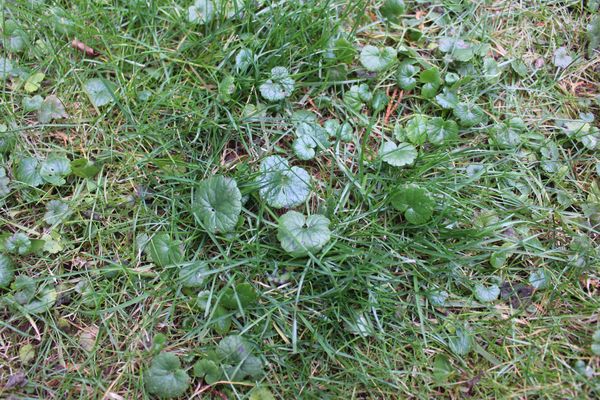The captivating scent of lilacs (Syringa), first mentioned in ancient Greek mythology, has entranced onlookers for millennia. Different lilac trees and bushes provide soft, rich colors and drifting fragrances to many formal and informal gardens.
The lilac tree is one of the twelve blooming, woody plants linked to olive trees. Although they may reach heights of up to 25 feet (7.6 meters), they are still regarded as bushes in terms of biology.
The only significant distinction between what we typically refer to as a lilac bush and the 'tree' kind is how quickly it grows. Depending on the type, they may reach heights of 4 to 12 feet (2.4–3.7 m) and are widely dispersed.
While some lilac cultivars need more seasonal trimming than others, these ambrosial beauties require little upkeep.
But it takes time and knowledge of what lilacs need to flourish to achieve excellent health, growth, color, and scent. Naturally, this also contains the top lilac fertilizer.
Top Performing Lilac Fertilizers
Best Lilac Fertilizer Granules
Espoma Organic Bone Meal 4-12-0
A slow-release, organic granular feed ideal for lilacs grown on soil rich in nutrients. Due to the low nitrogen ratio and high phosphorus content, there is minimal danger of fertilizer burn and an abundance of vibrantly colored lilac blossoms.
Best Lilac Fertilizer That Is Water-Soluble
Miracle-Gro Bloom Booster Fertilizer 15-30-15
This water-soluble feed with a high phosphorus ratio will produce an abundance of blossoms all summer long, whether you use it to give your lilacs a head start on the season or improve the health of a weak specimen.
Best Fertilizer Spikes
Jobe's Fertilizer Spikes 9-8-7
One easy-to-use, pre-measured fertilizer spike must be put about one inch into the ground to provide a slow-release feed throughout the growing season.
Choosing Fertilizer for Lilac Bushes
Aside from their beauty and aroma, their more than 1,000 distinct types have one thing in common: they are all simple to care for.
Lilacs like soil that is nutrient-rich, well-draining, and pH-neutral. Additionally, they need at least 6 hours of direct sunlight daily to produce the profusion of flowers they are famous for.
Lilac fertilizer is not required for barren soil. However, an NPK more incredible in phosphorus and lower in nitrogen will assist their normal blooming process when necessary.
Adding well-aged compost to your soil can improve fertility and the lilac's propensity for minor care.
Organic materials, such as bone meal and kelp, are potent substitutes for synthetic fertilizers that may provide sufficient nutrition while gradually improving soil fertility.
Soil pH for Feeding Lilac
The soil pH influences a plant's ability to assimilate nutrients. If it's too high, nutrients are kept in the ground and unavailable to plant roots. If too low, diseases and pests may easily infect the plant.
A neutral pH of 6.5 to 7.0 is ideal for lilac growth. This promotes optimum health and an unhindered supply of essential nutrients.
It is advised to do a soil test before planting fresh lilacs. If your pH is excessively high, adding compost to the soil will gradually bring it down in the most advantageous manner. Limestone used in agriculture is often utilized to raise it.
Lilac Bush N-P-K Ratio
Knowing what lilacs need makes it simple to choose the appropriate NPK. A three-numbered formula is included on every fertilizer label. This number represents the product's nitrogen, phosphorus, and potassium ratio.
A 5-10-10 NPK, for instance, has 5% nitrogen, 10% phosphorus, and 10% potassium. These three components are necessary for any plant to be healthy, just in various ratios, such as NPK.
Potassium and phosphorus are prerequisites for lilac fertilizer. This will guarantee lush foliage, strong roots, abundant blossoms, and a defense against pests and diseases.
Nitrogen is also required since, albeit to a smaller amount, the leaf contributes significantly to the beauty of a lilac shrub. A nitrogen nitrogen nitrogen fertilizer will produce an abundance of lush foliage but few blossoms.
However, if a soil test reveals a nitrogen or iron shortfall due to poor soil quality, you must increase the nitrogen to make up for it.
To cover all the bases, I've included a variety of fertilizers with various concentrations of the three main macronutrients.
Bone Meal for Lilac Trees
Lilacs benefit significantly from adding bone meal, which is granular and low in nitrogen. Its several benefits include gradual release (fewer treatments), soil pH augmentation when necessary, and provision of an entirely organic type of high phosphorus fertilizer. one that encourages the development of solid buds and broad swathes of fragrant blooms.
Granules are also simple to utilize. For every 12" of trunk diameter, you would scatter 12 cups around the base of your tree or shrub. Taking care not to apply within 3" of the actual trunk. Before using a product, always read the directions since they may change across brands.
Types of Fertilizer
There are four groups of fertilizers, each with various uses and gardening techniques.
Quick Release
Options that are liquid or water-soluble provide rapid nutritional absorption. Causing sick plants in poor soil to recover more quickly.
Slow-Release
Granules and spikes, which are highly concentrated and eco-friendly, provide a constant discharge of nutrients over a prolonged period.
Organic
Created from naturally occurring substances like well-rotted plant matter and animal byproducts rich in potassium, phosphorus, and nitrogen.
Inorganic
Made from minerals and compounds - can produce a greater yield. Nonetheless, it has the potential to pollute local water supplies and the land.
Fertilizer Granules
According to the manufacturer, granules release slowly and may provide regular nutrition for up to nine months, with the first benefits often being visible in only a few weeks. They are also thought to be friendlier in the environment and less prone to result in root burn.
Granules are applied by uniformly scattering them around the bases of trees, shrubs, and other vegetation. It doesn't need watering to activate and is less prone to leech into groundwater or surrounding surfaces.
Fertilizer Spike
One of the easiest to utilize spikes is if you're growing lilacs in pots. They are easy to put into loamy soil since they are pre-measured in different sizes. Also, since they release slowly, there is less chance of root burn.
These allow microorganisms that naturally exist in the soil to release nutrients. And have the advantage of promoting a higher resilience to disease and pests. Then, new spikes may be kept clean until they are required.
Liquid Fertilizer
Most liquid fertilizers are applied around the base of your plants as a water-diluted mixture. There are several that are made to be sprayed right onto foliage. The nutrients are then immediately delivered to the roots via the soil or leaves.
Additionally, liquid feeds often maintain the proper pH levels in your soil. And are usually reasonably cost-effective. However, owing to the incidence of overfeeding and the risk of root burn, caution is urged.
Organic vs. Synthetic
The decision between an organic fertilizer and a non-organic fertilizer comes down to personal preference and your goals for the growth process. To support an educated choice, having a fundamental grasp of how each operates and influences your surroundings is always good.
The components utilized in organic products have macro- and micronutrient concentrations found in nature. The phosphorus and calcium that are naturally present in bonemeal serve as an illustration of this.
Comparing the amounts of these naturally occurring nutritional components to those found in synthetic fertilizers, they are often lower. The amount of artificial ingredients used here is within the makers' control.
Using synthetic formulae often leads to larger blooms or yields quicker results. In contrast, there is a lower chance that organic fertilizers would contaminate your soil or adjacent water sources. They are also less dangerous for both humans and animals.
5 Top-Rated Lilac Fertilizers
Typically, lilacs thrive in climates with cool summers and warm winters. They may succeed in many environments with the correct fertilizer.
Based on my study of lilac fertilization and how effective and simple they are to use, I have identified my top 5 options. I've included product data, use instructions, and each product's advantages and disadvantages.
1. Espoma Organic Bone Meal 4-12-0
Pros
- Natural organic phosphorus and nitrogen source.
- Aids in breaking up dense, clay soil.
Cons
- Not recommended for plants that need more potassium.
When you have the ideal soil conditions for lilacs, this organic bone meal from Espoma is excellent. Because of its slow-release formulation, it only has to be applied twice, once at the beginning of the growth season and once again 8 to 12 weeks later, helping to sustain nutrient levels throughout the growing season.
Thanks to bone meal's naturally high phosphorus content, the result will be lilac bushes with abundant blossoms. Just enough nitrogen is present as well to ensure strong leaf development.
It's a choice that is constantly available beneath my potting table. When I till my soil in the spring, I apply new compost and then a suitable amount of this around all of my perennial flowers and where I know I'll be growing tomatoes and squash.
How to Use: Apply 1 or 2 pounds, depending on the tress or shrub size. For each potted plant, use 2 ounces or one heaping spoonful, and mix it into the soil.
2. Miracle-Gro Bloom Booster Fertilizer 15-30-15
Pros
- Tangible outcomes immediately.
- Uncomplicated application.
- Lengthy shelf life and stores nicely.
Cons
- Large plots will need more than one box.
This is my top recommendation for giving your lilacs the most excellent possible start at the beginning of the growth season and every time they require an immediate injection of nutrients going forward. A full comparison is only complete with Miracle-Gro.
The water-soluble, high-phosphorus NPK mix ensured numerous blooms by encouraging the enzymes that caused my potted lilac plants to produce abundant buds.
I just required one box for the whole season since it covers around 600 square feet. Based on the amount of blooms I received, this was quite simple to mix and apply. Additionally, it provides fantastic value for the money.
How to Use: Use one tablespoon of Miracle-Gro per 1 gallon of water in a watering container or hose attachment. Next, water the plant bases every 7 to 14 days.
3. Jacks Classic No.1.5 Fertilizer 20-20-20
Pros
- For optimum bud development and green foliage nutrition.
- Progressively releases nutrients for up to 4 months.
Cons
- Possibly too powerful for lilacs grown on nutrient-rich soil.
This triple 20 feed from Jack's Classic will aid in boosting soil fertility when establishing a new garden, where the soil may need some assistance. It will provide new seedlings with a nutrient-balanced growth environment.
This may be used to fertilize almost any plant growing in less-than-ideal soil, using equal parts nitrogen, phosphorus, and potassium.
How to Use: Apply one tablespoon per gallon of water used for trees and plants. Every 10 to 14 days, repeat. One tablespoon per gallon is applied every 7 to 10 days to annuals, perennials, vegetables, and roses.
4. Jobe's Fertilizer Spikes 9-8-7
Pros
- Up to 8 weeks long.
- Convenient bag with a seal.
Cons
- Can separate in dry soil
Jobe's spikes are one of the simplest fertilizers for big plants and shrubs. This is the ideal option to fertilize your lilacs and, if necessary, increase the pH of your soil since it is made for acid-loving plants. For many months at a period, while I was away doing other things, they fertilized my climbing lilacs.
When I got home, the climbers were more prominent and had more vibrant foliage. Watering is advised before application since dry soil might break down.
The slow-release mixture can feed shrubs for up to 8 weeks if you place the necessary number of spikes (per plant size) around them.
5. Scotts Flowering Tree & Shrub Food 11-7-7
Pros
- The best choice for well-composted soil.
- More development during the entire season.
Cons
- Not advised for trees and shrubs in pots.
This slow-releasing, granular choice performed well on a large, white lilac that I have bloomed in a less fertile region. With no need for me to be concerned about root burn, the additional nitrogen helped to enhance that.
A fantastic fertilizer option for dogwood and hydrangeas is one with a more significant phosphorus and potassium ratio focused on boosting the flower amount. A dynamic win-win situation!
How to Use: Spread one cup inside the drip line for every square foot of the growing area. For a 2-month feeding, work granules into the top 3" of soil and thoroughly water.
Do Lilacs Require Fertilization to Bloom?
Lilacs will obtain all the nutrients they need from the soil and absorb them as required if cultivated in a continuously rich medium. There won't be any more fertilizer required.
Naturally, not all dirt is made equal, however. The appropriate fertilizer might boost your chances of having lush foliage and many flowers if your lilacs grow in less-than-fertile ground dirt.
Lilac trees and bushes grown in pots will inevitably experience soil and nutrient leakage, necessitating the addition of additional fertilizers.
Choose feed that is high in phosphorus and low in nitrogen under these circumstances to encourage blooms without inhibiting leaf growth.
A well-balanced feed will promote vivid leaf development, robust root establishment, excellent nutrient and water absorption, and prolific flower output when fresh lilac plants are planted in poor soil.
How to Fertilize
The application technique you choose will determine how to fertilize your lilacs. For smaller areas, a watering can is used to apply liquids diluted with the required quantity of water. For more extensive garden areas, a hose attachment is used.
Apply them during the more excellent parts of the day to avoid burning that beautiful foliage and buds.
Spikes and dry granules may be sprayed on at any time of day and don't necessarily need to be watered in. However, using them just before a predicted downpour can speed up activation.
You may have greater control over the quantity and frequency of feeding by diluting water-soluble granules and applying the resultant "tea." Similar to liquid concentrates, this choice provides a quicker outcome.
Before using any fertilizer, a soil test should be carried out to see if your lilacs even need it.
How Often to Feed Lilac
The frequency of fertilization will also depend on the fertilizer brand you choose and how you apply it. Depending on their particular composition, many companies advise using their products at various intervals.
For instance, Jobe's spikes must be reapplied every eight weeks, or around twice or thrice during the growth season. Scott's granules suggest the same.
For constant feeding, water-soluble granules like the one I chose from Jack's Classic should be used every two weeks. As should the BloomBooster recipe from MiracleGro.
Again, the frequency of treatment may be much greater if liquid fertilizers are used for potted plants. In warmer areas, this would be dependent on leaching and plant respiration.
Regardless of the brand you choose, always follow label instructions to prevent harm from unintentional over-fertilization.
Fertilizer Burn Signs
No one intentionally overfertilizes their lilacs, but it sometimes happens by mistake. Overfertilization symptoms include:
- Yellowing leaves.
- Wilting foliage.
- Margins of leaves and blossoms are browning.
Excessive foliage and few or no blooms are sure indicators of nitrogen abuse. The reverse will occur with too much phosphorus.
Stunted growth, a withering of stalks and new branches, as well as leaves, no fresh blooms, and in severe instances, the death of the plant are symptoms of root burn in particular.
Ground-planted Lilacs may be over-fertilized; clip down the injured branches and cease fertilizing. The same should be done in pots; the soil should only be flushed lightly with water.
When to Fertilize
New lilac plants grown in rich soil only need fertilization in the second or third year. Depending on how thoroughly the roots have taken hold and their health, they may not require fertilizer.
Before new growth begins, a triple 20 fertilizer used in the spring will promote a well-balanced growing environment when planting in poor soil.
Follow the manufacturer's recommendations when starting your fertilization routine in the spring for lilacs, whether young or old, that require a nutritional boost. Then go until around mid-July.
In colder climes, stopping here will increase your chances of winter survival. However, a slow new development may be exposed to a frost in the early fall.
Fertilizing Lilac Conclusion
Selecting the best fertilizer for your lilac tree or shrub is straightforward if you know what to look for. Remember that they only need fertilization once established and are not big eaters.
In terms of N-P-K, they need a more excellent phosphorus ratio to promote the growth and development of buds and a lot of blooms, and a quick soil test will reveal how much nitrogen and potassium are needed.
In light of your newly acquired information, you should choose Espoma Organic Bone Meal to apply to lilacs in soil that is already nutrient-rich. Or use Miracle-Gro Bloom Booster when a quick boost of nutrients is needed.
This water-soluble feed with a high phosphorus ratio will produce an abundance of blossoms all summer long, whether you use it to give your lilacs a head start on the season or improve the health of a weak specimen.
To maintain healthy, vibrant lilac shrubs, natural plant food rich in organic nutrients is a top recommendation. Applying a balanced fertilizer, specifically designed for fertilizing lilacs, is crucial in the early spring to stimulate growth and promote flowering. The perfect blend of nutrients not only ensures that your lilacs bloom profusely but also strengthens the flowering trees' resistance against common ailments like powdery mildew.
When it comes to a lilac plant, regular fertilizing serves as a preventative measure as well as a solution for nutrient deficiencies. Thus, selecting the best lilac fertilizer from our curated list can go a long way in enhancing your garden's overall aesthetic. Remember, a well-nourished lilac plant is not only resistant to diseases but also blooms beautifully, becoming a standout feature in your garden space.
Through careful and timely application of these potent, organic fertilizers, you can transform your lilac shrubs into a stunning, fragrant spectacle. Here's to flourishing lilacs that bloom heartily year after year, lending a touch of serene beauty to your garden landscape.






